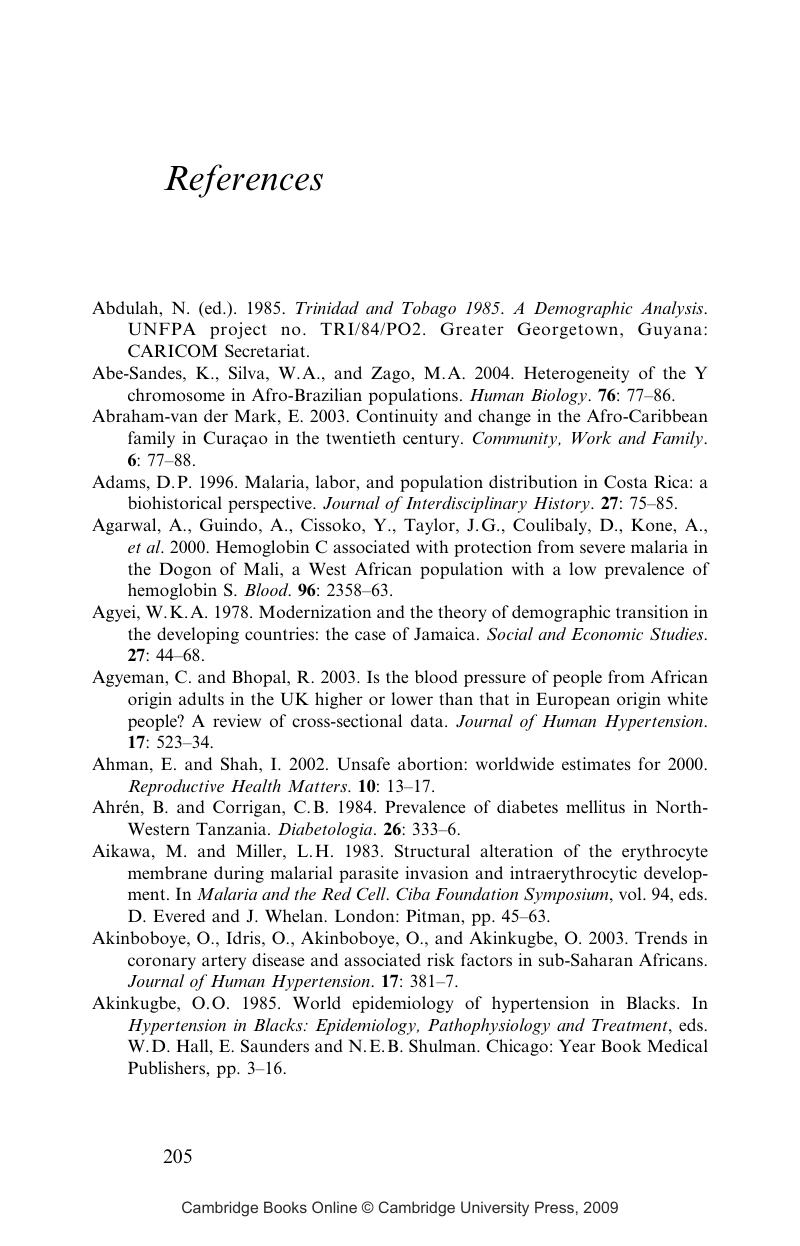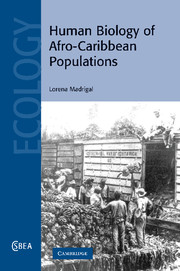Book contents
- Frontmatter
- Contents
- Foreword
- Acknowledgments
- 1 The African slave trade and the Caribbean
- 2 Obesity, hypertension, and non-insulin-dependent diabetes in Afro-Caribbean populations: an evolutionary overview
- 3 Infectious disease epidemiology and Afro-Caribbean populations
- 4 Population genetics of Afro-Caribbean groups
- 5 Demography of Afro-Caribbean groups
- 6 The Afro-Caribbean population in Limón, Costa Rica
- References
- Index
- References
References
Published online by Cambridge University Press: 07 August 2009
- Frontmatter
- Contents
- Foreword
- Acknowledgments
- 1 The African slave trade and the Caribbean
- 2 Obesity, hypertension, and non-insulin-dependent diabetes in Afro-Caribbean populations: an evolutionary overview
- 3 Infectious disease epidemiology and Afro-Caribbean populations
- 4 Population genetics of Afro-Caribbean groups
- 5 Demography of Afro-Caribbean groups
- 6 The Afro-Caribbean population in Limón, Costa Rica
- References
- Index
- References
Summary

- Type
- Chapter
- Information
- Human Biology of Afro-Caribbean Populations , pp. 205 - 245Publisher: Cambridge University PressPrint publication year: 2006



